Roses: Care Guide for Flower
Roses have long been celebrated for their timeless beauty, captivating fragrance, and versatility in gardens, landscapes, and even indoor pots. With thousands of varieties available, roses come in a wide range of colors, sizes, and growth habits, making them suitable for any garden style.
From the classic elegance of hybrid tea roses to the continuous blooms of floribundas and grandifloras, each type of rose offers unique charm and appeal. Climbing and rambling roses are perfect for trellises and pergolas, while miniature and patio roses provide compact beauty for containers and small spaces.
Beyond their visual appeal, roses also offer a delightful fragrance, with some varieties boasting rich, spicy, or citrusy scents. Whether used as cut flowers, garden focal points, or border plants, roses remain one of the most beloved flowers in the world, symbolizing love, beauty, and romance. Our gardening blog is a perfect place to find all the information you need!
Why Choose Roses for Your Garden or Home?
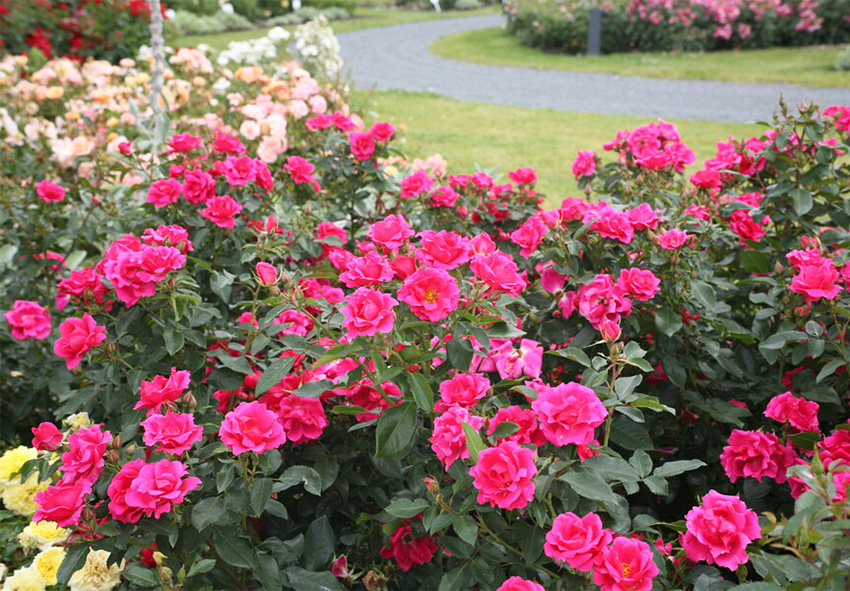
Roses are one of the most popular flowering plants for home gardens due to their beauty, versatility, and fragrance. Available in a vast array of colors, including classic red, pink, white, yellow, and even bi-colored varieties, roses allow gardeners to create stunning landscapes that bloom from spring through fall.
One of the key reasons to grow roses is their long flowering season. Many modern rose varieties, such as floribundas and grandifloras, are repeat bloomers, producing continuous waves of flowers throughout the growing season. This makes them a perfect choice for garden beds, borders, and cut flower arrangements.
Roses are also surprisingly hardy. Many species and cultivars can thrive in various climates, from temperate regions to warmer zones. With proper care, they can live for decades, becoming long-lasting garden centerpieces.
Additionally, roses have symbolic and sentimental value, often associated with love, romance, and celebration. Their sweet fragrance can enhance outdoor spaces, creating a serene and inviting atmosphere.
Whether you want a show-stopping centerpiece, a fragrant border, or a climbing display, roses offer endless possibilities for beautifying your garden or home.
The Most Popular Rose Varieties and Their Characteristics
Roses come in a wide range of types, colors, and growth habits, each suited for different gardening needs. Whether you’re looking for large, elegant blooms, continuous flowering, climbing varieties, or compact roses for containers, there’s a perfect rose variety for your space. Each rose variety brings its own unique charm, ensuring a beautiful and diverse garden all season long:
- Hybrid Tea Roses – Known for their large, single blooms on long stems, these are the classic choice for cut flowers and bouquets. Popular varieties include ‘Mister Lincoln’ (deep red, highly fragrant) and ‘Peace’ (yellow with pink edges, disease-resistant).
- Floribunda & Grandiflora Roses – These types produce clusters of blooms, making them ideal for mass plantings. Varieties like ‘Iceberg’ (pure white, continuous bloomer) and ‘Queen Elizabeth’ (soft pink, upright growth) are excellent choices.
- Climbing & Rambling Roses – Perfect for trellises, fences, and arbors, these roses add height and elegance to gardens. Fragrant climbers like ‘New Dawn’ (pale pink, vigorous growth) and ‘Eden Rose’ (cream and pink, romantic appeal) are favorites.
- Miniature & Patio Roses – Compact and easy to grow in small gardens or containers, these roses offer charming blooms on dwarf-sized plants. Top choices include ‘Baby Love’ (bright yellow, low-maintenance) and ‘Sweet Chariot’ (deep purple, fragrant).
Classic Hybrid Tea Roses
Hybrid tea roses are the quintessential roses with large, elegant blooms atop long, sturdy stems. They are prized for their beauty, fragrance, and suitability for cut flower arrangements.
- ‘Mister Lincoln’ – A deep red, highly fragrant rose with strong disease resistance. It’s an excellent choice for classic rose gardens.
- ‘Peace’ – A world-famous variety with yellow petals edged in pink. It’s known for its strong fragrance and resilience.
- ‘Double Delight’ – A striking red and white rose with a sweet, spicy fragrance. It thrives in warm climates.
- ‘First Prize’ – A large pink rose with a high-centered bloom. It’s ideal for bouquets and floral displays.
Hybrid teas require regular pruning and feeding to maintain healthy, vibrant blooms. They thrive in full sun and should be planted in well-draining soil to encourage strong growth and continuous flowering.
Floribunda and Grandiflora Roses for Continuous Blooms
Floribunda and grandiflora roses are perfect for gardeners who want an abundance of blooms throughout the season. These varieties produce flowers in clusters, creating a vibrant and colorful display.
- ‘Iceberg’ – One of the most popular white floribunda roses, known for its continuous blooming and disease resistance.
- ‘Queen Elizabeth’ – A grandiflora rose with soft pink blooms and a tall, upright growth habit.
- ‘Julia Child’ – A golden yellow floribunda with a buttery fragrance and exceptional heat tolerance.
- ‘Ch-Ching!’ – A bold lemon-yellow grandiflora rose with a strong citrus scent.
These roses are low-maintenance and ideal for garden borders. They thrive in full sun, requiring regular watering and occasional deadheading to ensure continuous flowering.
Climbing and Rambling Roses for Vertical Gardens
For those looking to add height and drama to their gardens, climbing and rambling roses are perfect choices. These roses produce long, arching canes that can be trained over trellises, fences, and walls.
- ‘New Dawn’ – A pale pink climber with a strong fragrance and vigorous growth.
- ‘Red Eden Rose’ – A red and pink climber with romantic, ruffled blooms.
- ‘Zephirine Drouhin’ – A thornless climbing rose with deep pink flowers and a strong, fruity fragrance.
- ‘Golden Showers’ – A yellow climber that produces large, fragrant flowers.
Climbing roses require support structures and regular pruning to maintain shape and encourage blooms. They thrive in full sun and can bloom multiple times per season with proper care.
Miniature and Patio Roses for Small Spaces
Miniature and patio roses are ideal for small gardens, balconies, and containers. Despite their compact size, they produce abundant blooms that bring color and fragrance to any space.
- ‘Baby Love’ – A bright yellow miniature rose with continuous blooms and excellent disease resistance.
- ‘Rose Mini Edenrose’ – A light pink rose with white center, perfect for pots and small garden beds.
- ‘Miniature Sunblaze’ – A vibrant red mini rose known for hardiness and long-lasting flowers.
- ‘Green Ice’ – A unique pale green and white miniature rose, offering a delicate and unusual bloom color.
These roses thrive in containers, making them perfect for urban gardens and patios. They require well-draining soil, full sun, and regular watering to maintain healthy blooms throughout the season.
How to Plant and Grow Roses Successfully
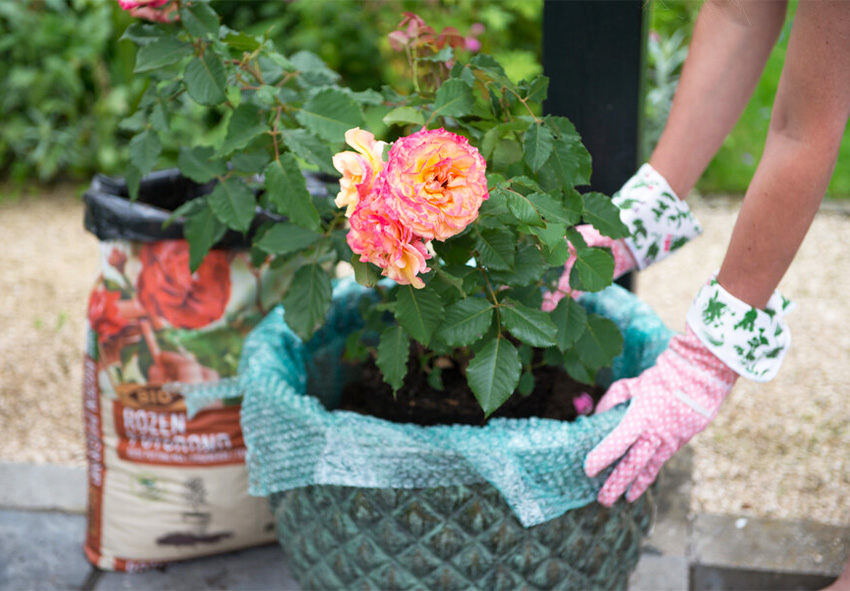
Growing roses requires thoughtful planning and care to ensure they thrive and bloom beautifully. Whether you’re an experienced gardener or a beginner, understanding the essential steps for planting and maintaining roses will help you achieve a vibrant garden. By choosing the right rose varieties, preparing the soil, and following a maintenance routine, you can enjoy beautiful roses year after year.
When planting roses, start by selecting healthy, disease-resistant plants. The right variety for your climate and garden conditions is crucial for success. Roses need well-draining soil, rich in organic matter, and a sunny location that receives at least six hours of direct sunlight daily. Proper planting depth and spacing are essential to allow healthy root growth and air circulation between plants, preventing disease. Water your roses deeply, keeping the soil consistently moist but not soggy, to establish strong roots without causing root rot.
Mulching around the base of the plant helps conserve moisture, suppress weeds, and maintain a stable soil temperature. Additionally, protecting roses from strong winds will prevent damage to delicate blooms. With these fundamental steps, your roses will have the best chance to flourish and provide stunning flowers throughout the growing season.
Step-by-Step Guide to Planting Roses
Follow these essential steps to successfully plant and grow roses: choose healthy plants, prepare the soil, plant at the correct depth, space your roses properly, water adequately, and maintain optimal growing conditions.
Step 1: Choosing Healthy Rose Plants
Selecting healthy rose plants is essential for a successful garden. Look for disease-resistant varieties, as they are more likely to thrive and require less maintenance. Healthy plants will have firm, green canes that are free from discoloration or damage. Avoid plants with signs of disease, such as black spots on leaves, yellowing foliage, or weak, spindly stems. These can indicate underlying issues that may hinder the plant’s growth and overall health.
When inspecting the roots, ensure they are firm and not dried out or rotting. Healthy roots are essential for proper establishment once planted in the soil. It’s also beneficial to choose varieties suited to your climate and growing conditions. Some roses perform better in colder climates, while others thrive in warmer regions. Consulting a local nursery or garden expert can help you choose the best variety for your garden’s conditions. Healthy rose plants are the foundation of a successful rose garden, so make sure to select the strongest, disease-resistant options available.
Step 2: Choosing the Right Soil and Location
Roses thrive in rich, well-draining soil with a slightly acidic pH level between 6.0 and 6.5. Before planting, test the soil’s pH and amend it with compost or other organic matter to improve fertility and drainage. Soil that is too clayey or heavy can retain too much moisture, leading to root rot, so ensure it drains well. To improve drainage, mix organic compost or well-rotted manure into the soil before planting.
Additionally, roses need a location that receives at least six hours of direct sunlight daily. Full sun is essential for encouraging strong growth and abundant blooms. Choose a spot that is not shaded by trees or buildings, as this will limit the sunlight your roses receive. The location should also have good air circulation to prevent the buildup of moisture, which can foster fungal diseases. Avoid areas where water collects, as soggy conditions can damage the roots. A sunny, well-drained location will give your roses the best chance to grow strong and healthy.
Step 3: Proper Planting Depth and Spacing
Planting depth and spacing are crucial factors that affect the health and growth of your roses. When digging a hole, make sure it is twice as wide as the root ball to allow the roots to spread out comfortably. This will help your roses establish a strong foundation. The depth of the hole should be such that the bud union (the swollen area where the root and stem meet) sits just above the soil level. This prevents the roots from being buried too deeply, which could cause rot or hinder growth.
Planting too deep can also stress the plant, preventing it from developing strong, healthy canes. Adequate spacing is equally important for healthy growth. Space your roses 18 to 36 inches apart, depending on the variety. Proper spacing ensures good air circulation around the plants, reducing the risk of diseases such as black spot and powdery mildew. It also allows the roses to grow freely, with enough room for each plant to expand and bloom beautifully.
Step 4: Watering After Planting
Watering is critical for establishing your roses in their new environment. After planting, water the roses deeply at the base, ensuring that the water reaches the root zone. Avoid watering the foliage, as wet leaves can promote fungal diseases. Roses need consistent moisture, especially in the early stages of growth, but the soil should never be soggy. Overwatering can lead to root rot, so it’s essential to strike a balance.
Check the moisture level regularly by feeling the soil. It should remain moist but not waterlogged. Watering deeply encourages the roots to grow deeper into the soil, which helps the plant withstand drought conditions later in the growing season. Applying mulch around the base of the rose plant helps retain moisture and keeps the roots cool during hot weather. A layer of mulch also reduces the need for frequent watering, as it helps the soil stay moist for longer periods. Always water roses in the early morning or late afternoon to reduce the risk of disease and allow excess water to evaporate before nightfall.
Step 5: Providing the Right Growing Conditions
Once your roses are planted, it’s essential to provide the right growing conditions to ensure they continue to thrive. Mulch around the base of each plant with a 2- to 3-inch layer of organic material, such as wood chips or bark. Mulch helps retain moisture, suppresses weeds, and regulates the temperature of the soil, preventing it from overheating in hot weather or freezing in cold conditions. It also prevents the soil from drying out too quickly between waterings.
Roses are sensitive to strong winds, which can damage delicate flowers and foliage. If you live in an area with frequent winds, consider planting your roses near a fence, wall, or hedge to provide shelter. Protecting your roses from harsh winds will allow them to produce more blooms and keep them looking healthy. Additionally, monitor your roses for pests and diseases regularly. If you spot any issues, take immediate action to prevent further damage. Pruning your roses annually will also help maintain their shape, promote airflow, and encourage healthy growth. By providing the right growing conditions, your roses will flourish and continue to enhance your garden.
Essential Rose Care Tips for Healthy Growth
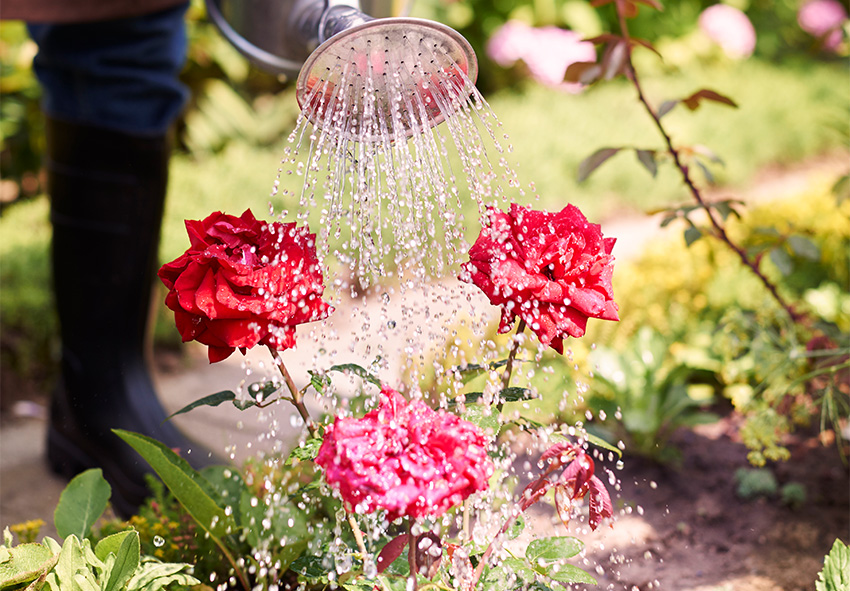
For roses to thrive and produce abundant blooms, they need consistent care and attention. Providing the right light, water, temperature, and feeding ensures healthy growth and vibrant flowers. Roses are relatively low-maintenance, but they require specific conditions to perform at their best. By following key rose plant care tips, you can enjoy beautiful roses in your garden for many seasons to come.
Roses need plenty of sunlight, as it’s essential for their blooming process. They should receive at least six hours of direct sunlight per day. Adequate light helps the plant develop strong stems, leaves, and healthy flowers. Along with proper sunlight, roses require regular watering, but it’s important not to overwater them, as this can lead to root rot. Water deeply, ensuring that the water reaches the roots, but avoid getting the foliage wet to prevent fungal infections.
Feeding roses with the right fertilizers encourages strong, continuous growth. Use a balanced fertilizer specifically designed for roses, applying it every 4-6 weeks during the growing season. Additionally, proper pruning and deadheading are crucial for maintaining the plant’s shape and encouraging more blooms. Lastly, keep your roses in temperatures above freezing during the winter months to protect them from cold damage. By addressing all these factors, your roses will thrive and produce beautiful flowers.
How to Care for Roses After Planting
It’s important to know how to care for roses in the garden just as to learn how to care for roses indoors. Caring for roses after planting involves providing the right amount of water, fertilizer, light, and temperature. These factors are crucial for encouraging healthy growth and ensuring that your roses bloom beautifully.
Step 1: Watering Roses the Right Way
Watering is an essential aspect of rose care, and it’s crucial to water roses deeply to establish a healthy root system. During the growing season, water your roses once or twice a week, depending on the weather conditions. If the weather is hot and dry, you may need to water more frequently, while in cooler or rainy conditions, less watering is required. Always ensure that water reaches the roots deeply, as shallow watering can lead to weak roots and poor plant development.
It’s important to avoid overhead watering, as wetting the foliage can promote fungal diseases like powdery mildew and black spot. Instead, water at the base of the plant, ensuring the soil around the roots is moist but not soggy. Proper drainage is essential to prevent water from accumulating around the roots, which can cause root rot. Additionally, ensure that your roses receive consistent moisture, as fluctuations in watering can stress the plants and affect their growth and blooming.
Step 2: Fertilizing for Strong Growth
Fertilizing roses is key to ensuring they grow strong and produce beautiful flowers. Use a balanced rose fertilizer, such as a 10-10-10 formulation, which provides equal amounts of nitrogen, phosphorus, and potassium. Apply the fertilizer every 4 to 6 weeks during the growing season, starting in early spring when the roses begin to show new growth. The nutrients in the fertilizer support healthy leaf and root development, as well as abundant flowering.
However, it’s important to stop fertilizing roses about six weeks before the first expected frost. This allows the plants to slow down their growth in preparation for winter. Fertilizing too late can encourage tender new growth that is more susceptible to cold damage. Follow the manufacturer’s instructions on the fertilizer packaging to avoid over-fertilizing, as excessive nutrients can harm the plant or encourage more foliage than flowers. Proper fertilization, combined with adequate water, will promote strong, healthy growth and vibrant blooms.
Step 3: Providing Proper Light and Temperature
Roses thrive in full sun, which is critical for producing abundant blooms and healthy growth. Ensure that your roses receive at least six hours of direct sunlight each day. Without enough light, roses will not produce as many flowers, and their growth may be stunted. Sunlight helps roses produce the energy they need for photosynthesis and encourages the development of strong stems and vibrant blooms.
In addition to adequate sunlight, roses require specific temperature conditions to thrive. Roses are not frost-tolerant and should be kept in areas where temperatures stay above freezing during the winter. In colder climates, it’s a good idea to protect your roses by mulching heavily around the base or covering them with rose collars or burlap during the colder months. If temperatures dip too low, the plant may suffer from frost damage, which can severely impact its health and blooming ability. Keeping your roses in optimal light and temperature conditions will help them grow strong and produce beautiful flowers year after year.
Step 4: Pruning and Deadheading for Better Blooms
Pruning and deadheading are essential tasks for maintaining healthy, productive roses. In early spring, before new growth begins, prune dead or weak stems to encourage fresh, healthy growth. Pruning helps shape the plant and ensures that the roses will produce strong, vibrant blooms. Remove any damaged or diseased wood to prevent the spread of diseases and encourage the plant to focus its energy on healthy growth.
Deadheading, or removing faded flowers, is equally important for promoting continuous blooming. By removing spent flowers, you encourage the plant to produce more buds and extend the flowering period. Regularly deadhead your roses by cutting the flower stem back to a healthy set of leaves, just above a leaf node. This encourages the plant to redirect its energy into producing new flowers instead of seeds. Pruning and deadheading help your roses stay healthy, vibrant, and continually blooming throughout the growing season.
How to Encourage Your Roses to Bloom Again
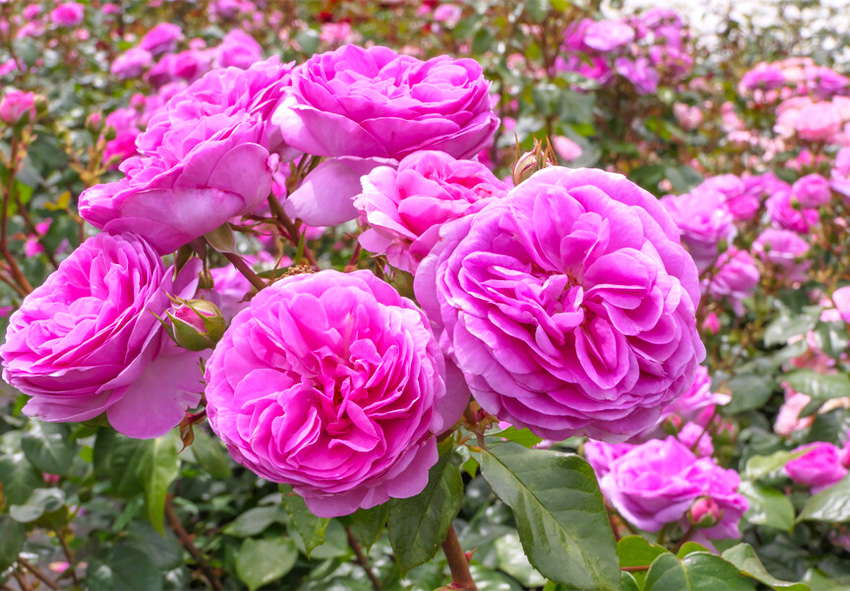
Roses may not rebloom for several reasons, including poor care, environmental factors, or inadequate pruning. While some rose varieties naturally bloom once a season, many modern types are bred to bloom repeatedly. However, when roses don’t rebloom, it can be due to factors like improper pruning, lack of nutrients, insufficient sunlight, or unfavorable weather conditions.
To improve blooming, ensure your roses receive plenty of sunlight—at least six hours a day—and that they are consistently watered but not overwatered. Fertilizing with a balanced fertilizer every 4 to 6 weeks during the growing season provides essential nutrients that encourage reblooming. Additionally, keep your roses healthy by regularly checking for diseases or pests and removing any damaged stems or leaves.
Proper deadheading, pruning, and post-bloom care also play a significant role in encouraging repeat blooms. For some varieties, cutting back old flowers or stems stimulates new growth and helps the plant focus its energy on creating fresh buds. Understanding how to properly care for your roses throughout the growing season will not only ensure a healthy plant but also encourage beautiful blooms throughout the year.
Step-by-Step Guide to Ensuring Reblooming
To ensure your roses rebloom, follow these essential steps: deadhead faded flowers regularly, provide consistent care and fertilization, prepare the plants for winter by mulching and cutting back long canes, and transplant roses when necessary to rejuvenate the plant. These practices help encourage new growth and continuous blooming.
Step 1: Deadheading and Post-Bloom Care
Deadheading is one of the most effective ways to encourage roses to rebloom. After the flowers fade, remove the spent blooms by cutting them just above the first five-leaflet leaf. This helps prevent the plant from putting energy into seed production and encourages it to focus on new flower buds. By removing spent flowers, you stimulate the plant to send out new growth and buds.
Continue fertilizing your roses with a balanced rose fertilizer during the blooming season, as this will provide the necessary nutrients for vigorous growth. Regular fertilization helps the plant develop healthy stems, leaves, and blooms. However, don’t fertilize late in the growing season, as this can encourage tender growth that is more vulnerable to frost damage. Along with deadheading, ensure that the plants are well-watered, but avoid soaking the soil. Too much water can lead to root rot, preventing the plant from effectively producing new flowers. Consistent care and attention to detail will help your roses thrive and encourage them to rebloom.
Step 2: Preparing Roses for Winter
Preparing your roses for winter is essential to ensure they survive the colder months and are ready to bloom again in the spring. Begin by mulching heavily around the base of the plant before the first frost. A 4 to 6-inch layer of mulch helps insulate the roots and keeps them protected from freezing temperatures. Mulch also helps retain moisture and prevents soil erosion.
In addition to mulching, it’s important to cut back any long canes to prevent them from breaking in heavy winter winds or snowstorms. Trim back long or weak growth to about 2 to 3 feet, ensuring that you leave healthy, strong canes for the new season. If you live in an area with harsh winters, consider using a rose cone or burlap wrap to further protect the plant from extreme cold. By taking these precautions, you can ensure that your roses remain healthy and are ready to bloom when the weather warms up.
Step 3: Dividing and Transplanting Roses
Dividing or transplanting roses can help improve their health and encourage better blooming. It is best to transplant roses in early spring or fall when the weather is mild, and the plant is not actively blooming. Choose a new location that has well-draining soil and receives plenty of sunlight, as this is essential for the rose’s growth and blooming potential.
When transplanting, carefully dig around the root ball and gently lift the plant out of the ground. Avoid damaging the roots as much as possible. After relocating the rose, water it deeply to help reduce transplant shock and ensure that the roots establish themselves in the new soil. Keep the soil consistently moist but not waterlogged, as roses do not tolerate soggy conditions. Transplanting gives the roses a fresh start in a new location, encouraging better growth and reblooming. By dividing and transplanting, you can rejuvenate older rose plants and enhance their overall vitality, leading to better blooming in the future.
Common Problems with Roses and How to Fix Them
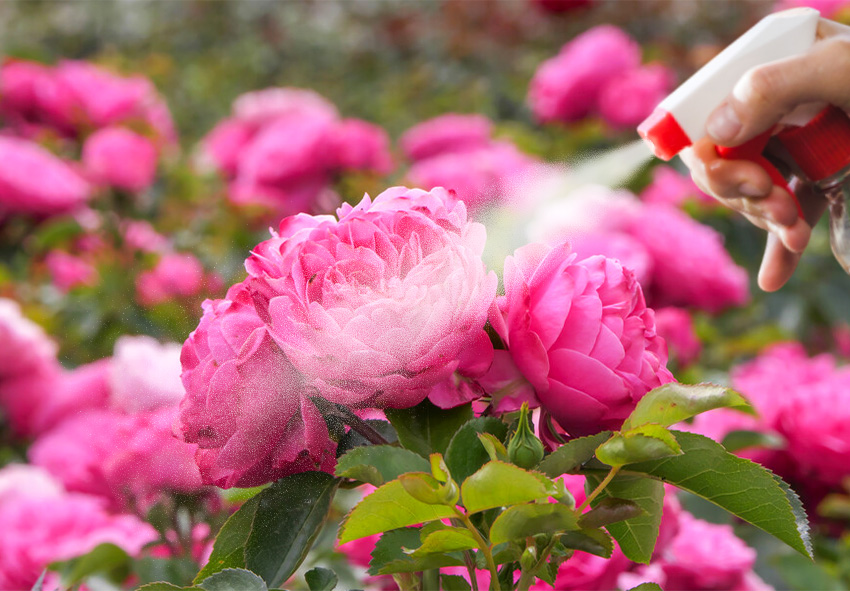
Roses, while relatively hardy, can experience a variety of issues that can affect their health and appearance. Identifying these common problems early and knowing how to address them is essential for maintaining healthy and vibrant roses in your garden. From blooming issues to pests and diseases, understanding the root causes of these problems will allow you to take the necessary steps to fix them. Proper care, timely interventions, and preventive measures are key to keeping your roses healthy and beautiful.
By troubleshooting common rose problems like poor blooming, yellowing leaves, or pest infestations, you can ensure that your roses continue to thrive. Addressing issues such as overwatering, poor soil conditions, or lack of sunlight can improve your roses’ growth and overall health. For pest-related problems, prompt action with organic insecticides and proper garden maintenance can prevent long-term damage. With the right care and attention, you can easily overcome most rose-related challenges and enjoy beautiful blooms year after year.
Troubleshooting Guide
Roses, though beautiful and relatively easy to care for, can face a variety of common problems that impact their health and appearance. Knowing how to troubleshoot these issues quickly and effectively is key to keeping your roses healthy and thriving. Here, we’ll explore some common rose problems and offer solutions to help you address them. Whether it’s poor blooming, yellowing leaves, or pest infestations, this guide will provide practical steps to restore the health of your roses.
Issue 1: Roses Not Blooming
Cause:
- There are several reasons your roses may not be blooming. Overfertilization, especially with a nitrogen-heavy fertilizer, can encourage lush foliage growth at the expense of flowers.
- Additionally, lack of regular pruning or insufficient sunlight can also prevent blooming. Roses require a balance between strong foliage and flowers, and neglecting to prune or expose them to enough sunlight can inhibit flowering.
Solution:
- To fix this, first, reduce nitrogen levels in the fertilizer and switch to a balanced rose fertilizer. Regularly prune your roses to remove dead or weak stems, and trim back spent flowers to encourage new growth.
- Make sure your roses receive at least 6 hours of direct sunlight per day, as insufficient sunlight will limit blooming. With proper care and attention to these factors, your roses should begin to bloom more prolifically.
Issue 2: Yellowing Leaves or Weak Growth
Cause:
- Yellowing leaves and weak growth are common symptoms of rose plants facing stress. This can be caused by overwatering, poor drainage, or a lack of essential nutrients. Overwatering leads to root rot, preventing the plant from absorbing nutrients properly, while poor drainage can exacerbate this issue.
- Nutrient deficiencies, particularly nitrogen, iron, or magnesium, can also cause weak growth and yellowing foliage.
Solution:
- Improve drainage by ensuring the soil around the roses is loose and well-draining. If necessary, amend the soil with compost or organic matter to improve its structure. Use a balanced rose fertilizer that provides the essential nutrients roses need for strong growth.
- Be careful not to overwater your roses—only water when the top inch of soil feels dry. Proper watering, combined with the right nutrients and improved drainage, will help your roses grow strong and healthy with vibrant green leaves.
Issue 3: Pests and Diseases
Cause:
- Roses are susceptible to several pests and diseases. Aphids, tiny insects that suck sap from the plant, are a common pest that can stunt growth and damage leaves. Black spot is a fungal disease that causes dark, round spots with yellow halos on the leaves, while powdery mildew creates a white, powdery coating on the foliage. Both fungal diseases thrive in damp, humid conditions, often resulting in weakened plants.
Solution:
- To combat pests like aphids, consider using organic insecticides such as neem oil or insecticidal soap, which are safe for the plant but deadly to the pests. Ensure your roses have adequate air circulation to reduce the chances of fungal diseases like black spot and powdery mildew. If you spot black spot or mildew, remove the affected leaves and dispose of them properly.
- Regularly monitor your roses for signs of pests or disease and act quickly to minimize damage. Proper care, combined with early intervention, will keep your roses healthy and pest-free
Propagating Roses: Growing More Beautiful Blooms
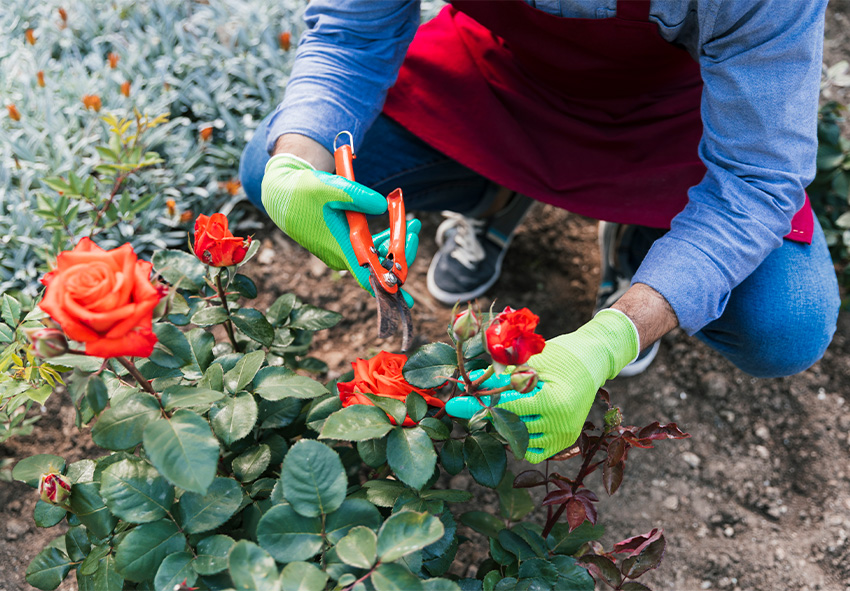
Propagating roses is an excellent way to multiply your beautiful blooms and create new plants for your garden or to share with friends and family. There are several methods for propagating roses, with cutting propagation and grafting being the most popular techniques. Both methods allow you to reproduce your favorite rose varieties and maintain their unique characteristics.
Propagating roses from cuttings is a simple, low-cost method that requires minimal equipment. Another option is grafting, a more advanced technique, which involves joining a rose stem to a different rootstock. Grafting is particularly useful for creating stronger plants with better disease resistance, while cuttings are ideal for growing roses that retain the same characteristics as the parent plant.
Whether you choose to propagate your roses from cuttings or through grafting, each method has its benefits. With patience and proper care, you can quickly expand your rose collection and enjoy a flourishing garden full of vibrant and healthy roses. In the next sections, we’ll walk you through the steps for both methods.
How to Propagate Roses Step-by-Step
To propagate roses, you can follow two main methods: cuttings or grafting. Cuttings involve taking a healthy 6-inch stem in summer and rooting it in moist soil under indirect light. Grafting involves joining a rose stem to a hardy rootstock, ensuring disease resistance and stronger growth.
Step 1: Propagating Roses from Cuttings
One of the easiest and most effective methods of propagating roses is through cuttings. To begin, take a 6-inch cutting from a healthy rose stem in early summer. Make sure the cutting is taken from a mature stem with no flowers or buds, as this helps ensure the plant will focus on root development. Use a clean, sharp knife or pruners to make a cut just below a leaf node. Remove the lower leaves, leaving only two or three at the top of the cutting.
Place the cutting in a container filled with moist, well-draining soil, ensuring that the cut end is inserted into the soil about 2 inches deep. Keep the cutting in a warm location with bright, indirect light. Avoid direct sunlight, as it can dry out the cutting. Maintain consistent moisture in the soil, and cover the cutting with a plastic bag or dome to create a humid environment that promotes root growth. After a few weeks, the cutting should develop roots. Once established, the new rose plant can be potted up and eventually planted in your garden.
Step 2: Grafting and Budding Techniques
Grafting and budding are advanced propagation techniques that allow you to combine different rose varieties to create stronger, disease-resistant plants. Grafting involves attaching a stem (scion) from a rose variety you want to propagate onto the rootstock of a different rose, often a hardier or more disease-resistant variety. This technique is typically done in early spring or late winter, before the plants break dormancy.
T-budding and chip budding are common methods of grafting. In T-budding, a “T” shaped incision is made in the bark of the rootstock, and a bud from the desired rose is inserted and secured with tape. Chip budding involves making a small “chip” cut in the rootstock and inserting a small bud from the scion into the cut, which is then wrapped tightly. Both techniques encourage the graft to heal and grow together.
Grafting onto hardy rootstock not only promotes better disease resistance but also ensures that your rose will grow with improved vigor and strength. It’s a more involved process compared to cuttings but can yield long-lasting and resilient rose plants.
Frequently Asked Questions (FAQs) about Roses
1. Can roses grow well indoors, and what type is best?
Yes, roses can grow indoors if they receive plenty of light and proper care. Miniature and patio roses are best suited for indoor growth due to their compact size. Place them near a south-facing window or under grow lights to ensure at least 6 hours of sunlight daily. Keep the soil consistently moist but not soggy, and maintain good airflow to reduce the risk of mildew and pests.
2. How often should I water roses in the garden?
Water garden roses deeply about 2–3 times per week, depending on your climate and soil type. The goal is to keep the soil consistently moist at the root level without overwatering. Early morning watering is best to reduce evaporation and prevent fungal diseases. During very hot or dry weather, roses may need more frequent watering. Always water at the base to keep the foliage dry and disease-free.
3. What is the best fertilizer for roses, and when should I apply it?
Use a balanced rose fertilizer (e.g., 10-10-10) or one specially formulated for roses. Begin feeding in early spring when new growth appears, and continue every 4–6 weeks throughout the growing season. Stop fertilizing about 6 weeks before the first expected frost to avoid encouraging tender new growth. For indoor roses, apply a diluted liquid fertilizer monthly during active growth, and reduce or pause feeding during dormancy.
4. How do I prevent common rose pests and diseases?
To prevent pests and diseases, practice good garden hygiene: remove fallen leaves, prune dead or crowded growth, and ensure proper spacing for airflow. Common pests like aphids and spider mites can be managed with insecticidal soap or neem oil. For fungal issues like black spot or powdery mildew, use a fungicide early in the season and water at the base to avoid wetting leaves. Regular monitoring is key to early control.
5. How can I order Holland roses from your online store?
Ordering roses from our online store Dutch-bulbs.com is simple and convenient. Visit our website and browse our selection of rose varieties, including those sourced from Holland for their exceptional quality and beauty. Once your order is confirmed, our team will carefully pack and ship your Holland rose bulbs directly to your doorstep, ensuring they arrive fresh and ready for planting.
Published: 31.03.2025
